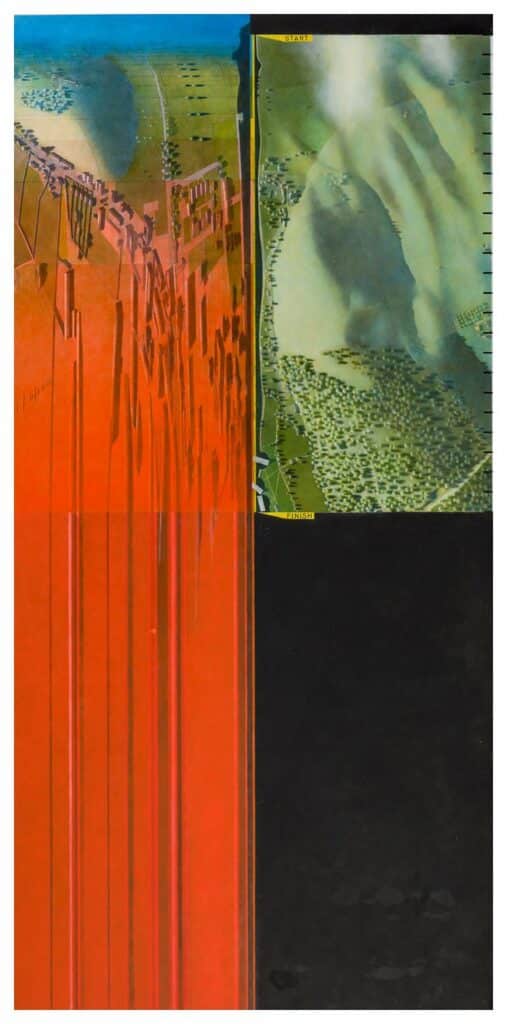Drawing, Movement and Medium: Mark Dorrian in Conversation with Michael Webb, Episode 3
– Mark Dorrian and Michael Webb
The third episode of Michael Webb’s conversation with Mark Dorrian resumes with the fate of the Sin Centre model. The piece is published to mark the entry of the first part of a new model of the Sin Centre into the Drawing Matter collection.
The conversation took place on Wednesday, 22 November 2017 at the Adam House Lecture Theatre, Edinburgh School of Architecture and Landscape Architecture, Edinburgh College of Art, University of Edinburgh.
Mark Dorrian: There’s a whole mythology around this model. When I mentioned to Peter Wilson that I was writing something on the Sin Centre, he asked me if I knew the story about the model repeatedly falling off the back of Michael’s bicycle when he was on his way to submit it. But when I saw this picture and the size of the model I realised that it can’t be true. Someone else, I think Michael Sorkin, claimed that it got crushed in the closing doors of a tube train. But what’s the real story? [laughter] What happened to the model?
Michael Webb: Bit more prosaic I’m afraid. I actually had a taxi take the model down to the Polytechnic, and every time we went around a corner the model swayed. By the time we got to the Poly it was just a pile of junk. So – there we are. It was tragic.
MD: So, was that for the final submission of the work?
MW: Yes, my final exit.
MD: Your final exit from the Poly. But the Sin Centre was published in Archigram 2.
MW: That’s right.
MD: Shall we move on? Here are some images which show various studies of the project and the ways that it has been drawn at different times. This is something that I certainly wanted to emphasise, something very significant and characteristic about Michael’s work – the fact that the projects never really come to an end, that you’re constantly…
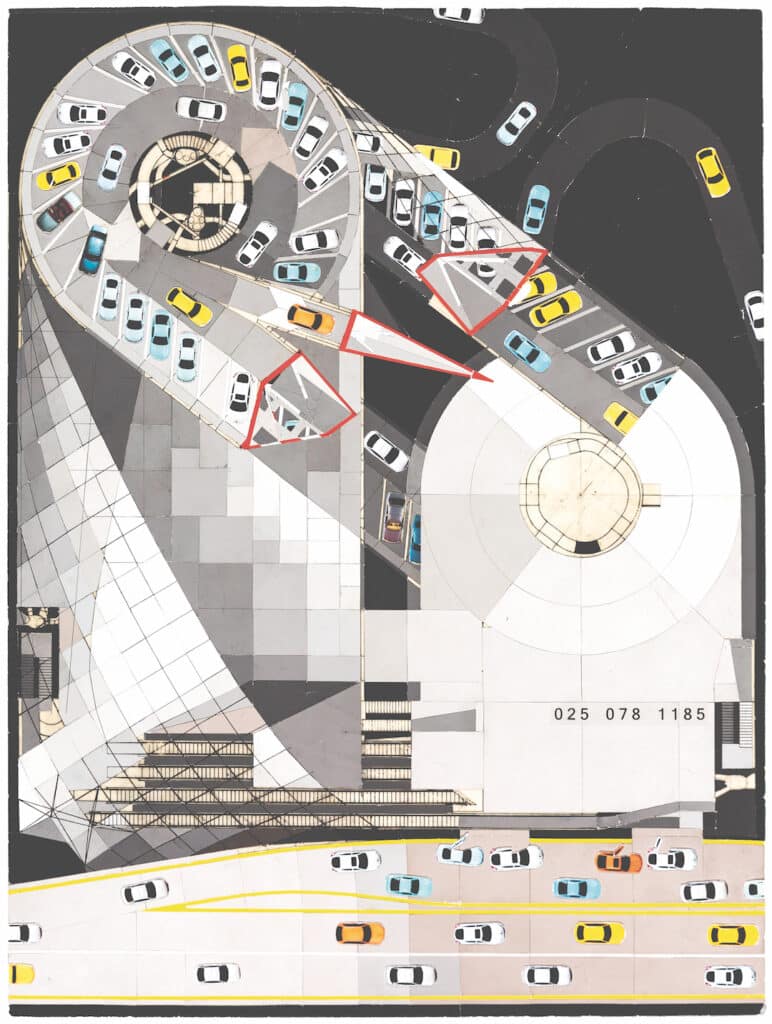
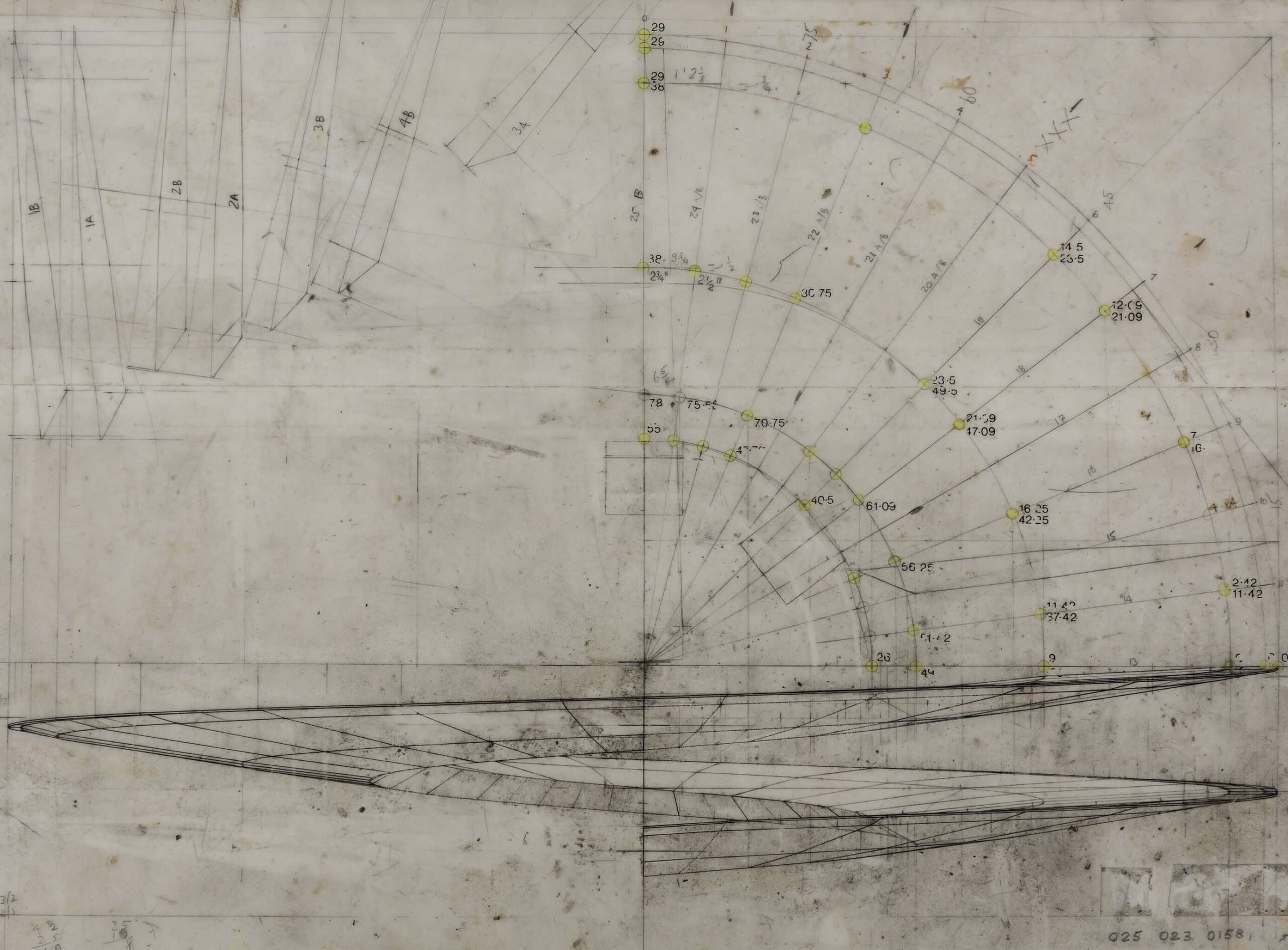
MW: Oh no…
MD: …redrawing, and living with, the project and finding ways to animate it. I mean, not only are the projects to do with motion but they are themselves constantly kept in motion by the fact that you are always returning to them and reworking them. Let’s advance the slides a bit. The variety of the ways that they are drawn is very striking – so, this is one of the drawings, one from the Drawing Matter collection, a beautiful elevational study of one-and-a-quarter turns of one of the ramps. Then this collage studying the morphology of the ramp. It was when I was looking at this that I realised just how complex the ramps are. Because … well, beforehand I thought that there was a ramp that went up and then a ramp that came down but they actually intertwine.
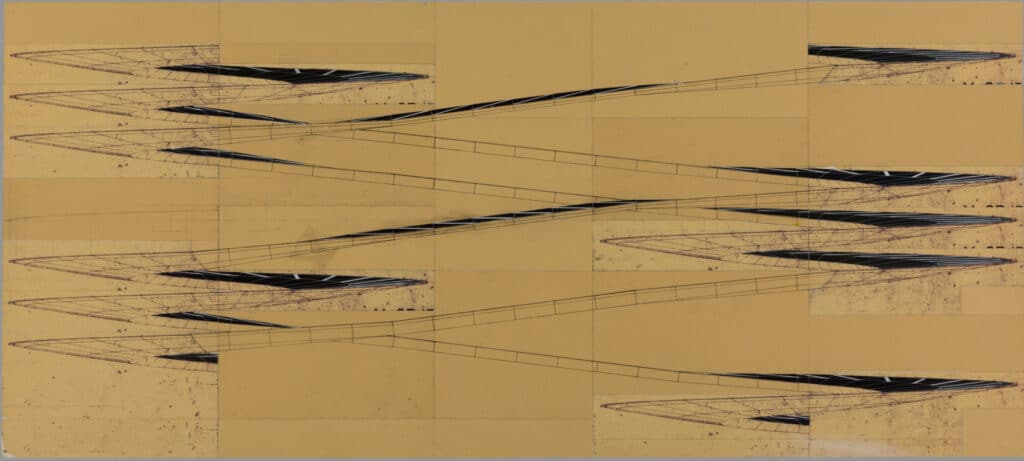
MW: That’s right.
MD: So on the spiral within one vertical section there would be cars going down in one part and in another cars coming up because of the way the ramps switch across.
MW: Yes. There are crossovers too. So you could be going up and then you could switch over and go on the down ramp. But then one thing about this drawing is that… It’s no longer in use now, but it used to be that if you worked in an office and you did a working drawing you would take it to a printer and they gave you what was called a ‘dyeline’ print. They used ammonia a lot in the production of these drawings and you took it over there and had to sniff the ammonia, which I think had quite an effect on me… And the trouble was they used paper which had to be exposed to light and that’s what made the print. But the process kept going on and if you happened to leave a drawing in the sunlight it would become totally faded within a very short period of time. What happened here was that by the time I got to assemble the prints together – the prints were like dyeline prints – the colour of the paper had changed from white to yellow. So I chose coloured paper to stick on to enhance the scope of the drawing. I had to choose a yellow colour to match the colour of the print as it was. So, you know, talk about drawings changing over time… it’s a totally different colour now from what it was when it started life.
MD: I’m not sure if this is a drawing from around the same time Michael, or if it’s earlier or later – this one where we read the bracing stair structure …
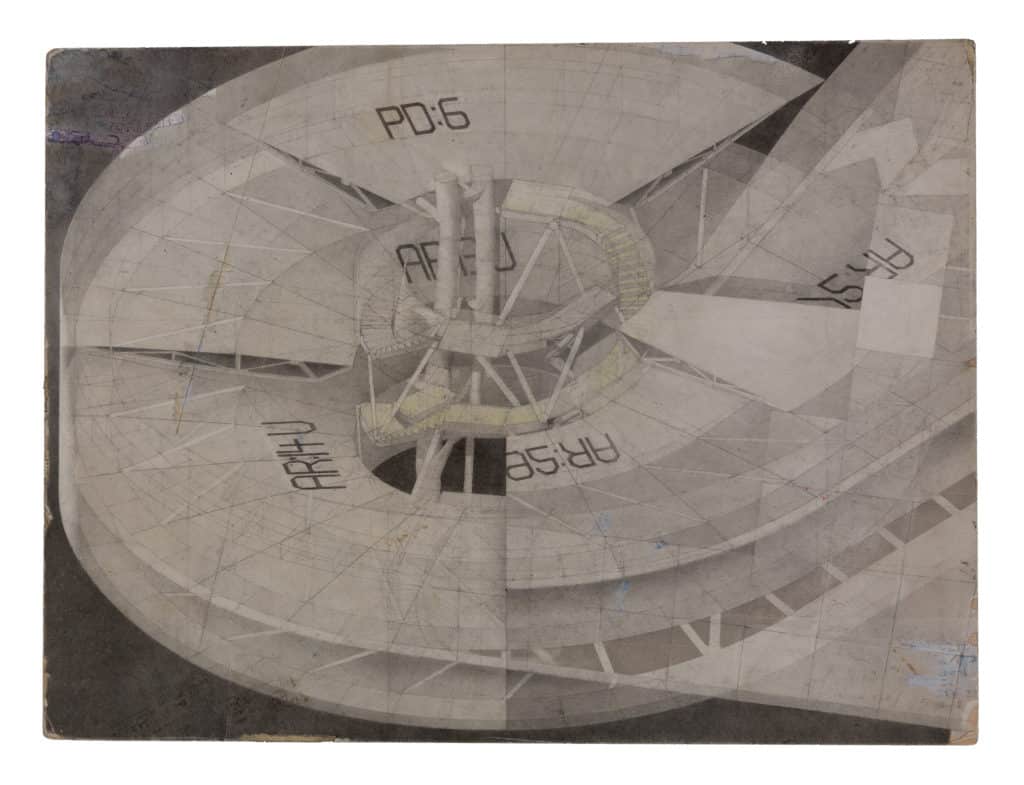
MW: Yes, what happened there? [laughter] Something very funny is going on there. If I can diverge briefly and talk a little bit about time and drawings … I remember there was an exhibition in Madrid of what has happened to famous paintings over the centuries. And there’s this character of ‘pentimento’ where, because the varnishes used in oil paintings became transparent over the centuries, the paintings transform. You might have, say, a condition where an artist had bought a canvas on which was perhaps a rather bad painting – an angel with her arm up like that [gestures] – and paint over it with their own work and it would be that work that came down to us. So, it might be the Madonna and Child, but over the centuries the arm of the previous painting would become evident. And gradually, from year to year, as the varnish faded, the arm would become more and more noticeable, which of course had nothing to do with the subject matter of the final painting. I always thought that was lovely, that you would have this gradual emergence of another being. If you went back every twenty years to look at the painting the arm would become more evident with each visit. It’s just a little story about doing a drawing and living fifty years more and seeing that drawing change so sometimes you hardly recognise it.
MD: Let’s move on through some more drawings … this is quite an early one, Michael, of the Sin Centre escalators.
MW: I should say … can I say?
MD: Yes, go ahead…
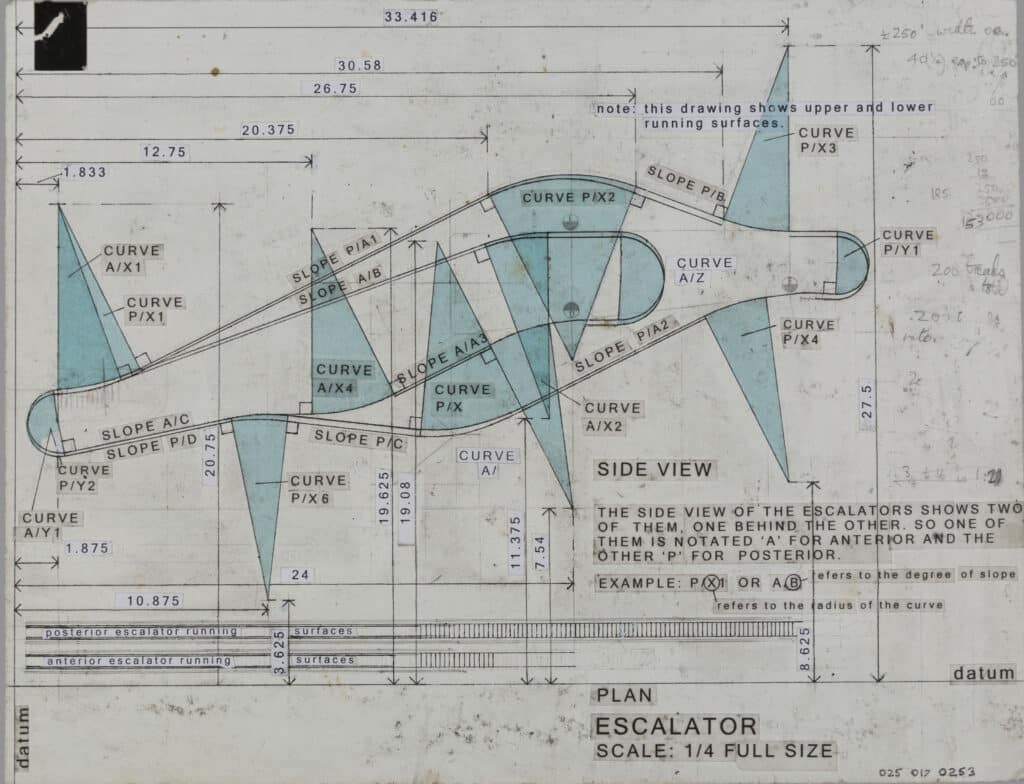
MW: If we go back one – there’s a very dubious proposition here, that you could design an elevator which looked conventional when you were at the foot of it, about to walk up, but what would be happening is that when it got to the top, it would go round the drum and people would be able to get on again to go down. The problem is getting them on and off, because you want to get off before it starts going round the drum [laughter].
MD: I think the next slide is about this …
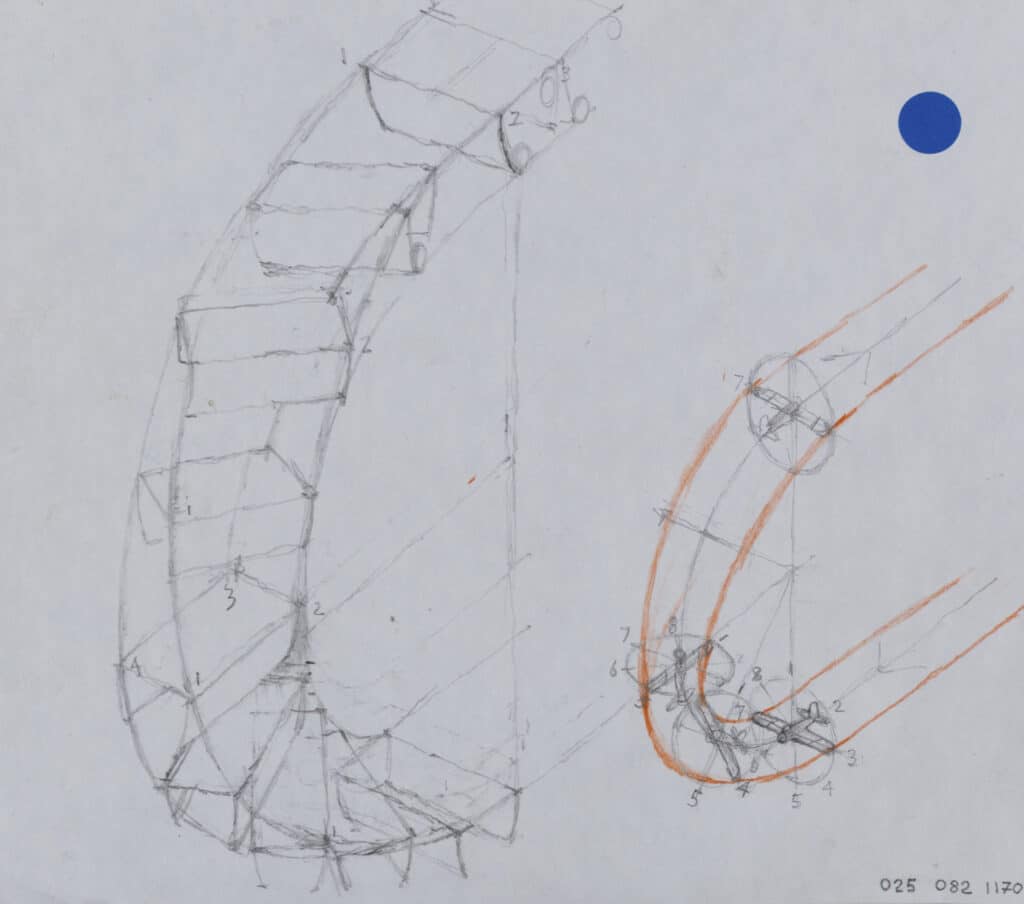
MW: That’s right. That’s actually an aeroplane doing what’s called the ‘Immelmann turn’. If we had another hour of this, you know, we could describe it … Max Immelmann was a famous German World War I flying ace. So, it’s about how an aeroplane would have to manoeuvre itself to do the Immelmann turn and I thought there was a connection there with how the steps of the escalator would have to perform.
MD: So let’s say a few words about Temple Island. I was watching the recording of a discussion, which was pretty recent I think – it was at the AA at the time of the ‘First Projects’ exhibition. Dennis Crompton is there, David Greene too. At one point there’s a slide projected of a perspectival view of the Sin Centre and you comment that it’s ‘so wrong to draw that building in perspective; it’s orthographic space, not perspectival space’. It’s interesting to move from that comment to Temple Island, which is all about perspectival vision, foreshortening and diminishment, with its series of graphic reflections on acceleration and the measurement of pictorial space in relation to the infinity of the vanishing point. I was wondering if you would say a few things about the transition between these projects because there are very similar concerns I think in the Sin Centre about velocity and the effects of relational movement on perception – but they take on a new form in Temple Island.
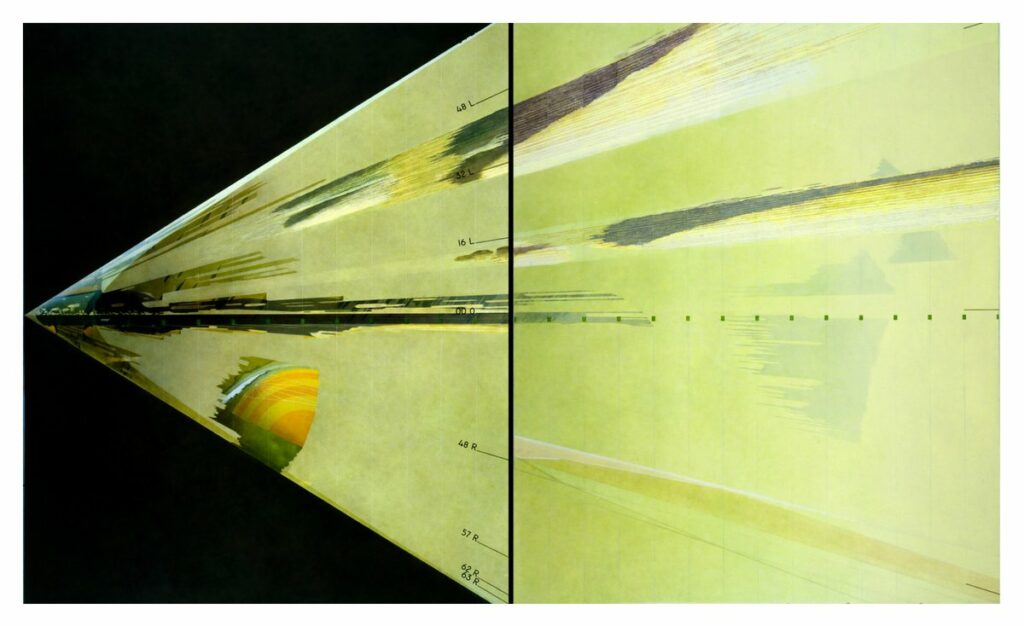
MW: Mmm, yes. There is such a thing as perspectival space I think, and orthographic space. The Sin Palace was very much an orthographic project – I tried doing a couple of perspective drawings before I realised that they just didn’t work – and I couldn’t figure out why they weren’t working. But in Temple Island, it’s all about perspective – about foreshortening and infinity. As soon as you start working with perspective you involve yourself with infinite space. One thing I wondered about was the connection between the perspective of the space and black holes, because I tried… [trails off]. One drawing I did was a perspective grid, made of squares, going back to infinity – and the lines get so dense there’s a strange Moiré fuzz round the vanishing points. To examine that world is something I’m still doing, something I’m very interested in.
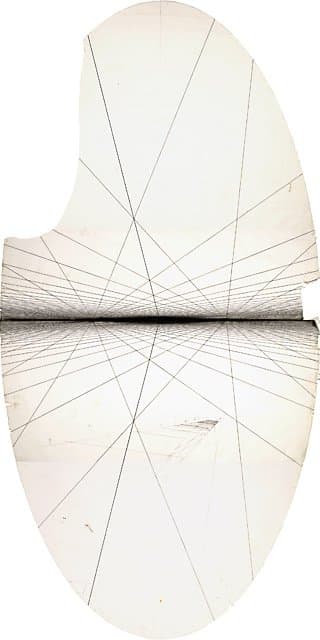
MD: Let’s move on through some more images. This is an interesting one, which juxtaposes a kind of eighteenth-century pastoral view …
MW: Romantic landscape …
MD: … with this graph of – is it acceleration or mass? – as the object moves towards the vanishing point. I suppose this is also the story of Temple Island – for you this is also related to the monocular periscope of the submarine, isn’t it?
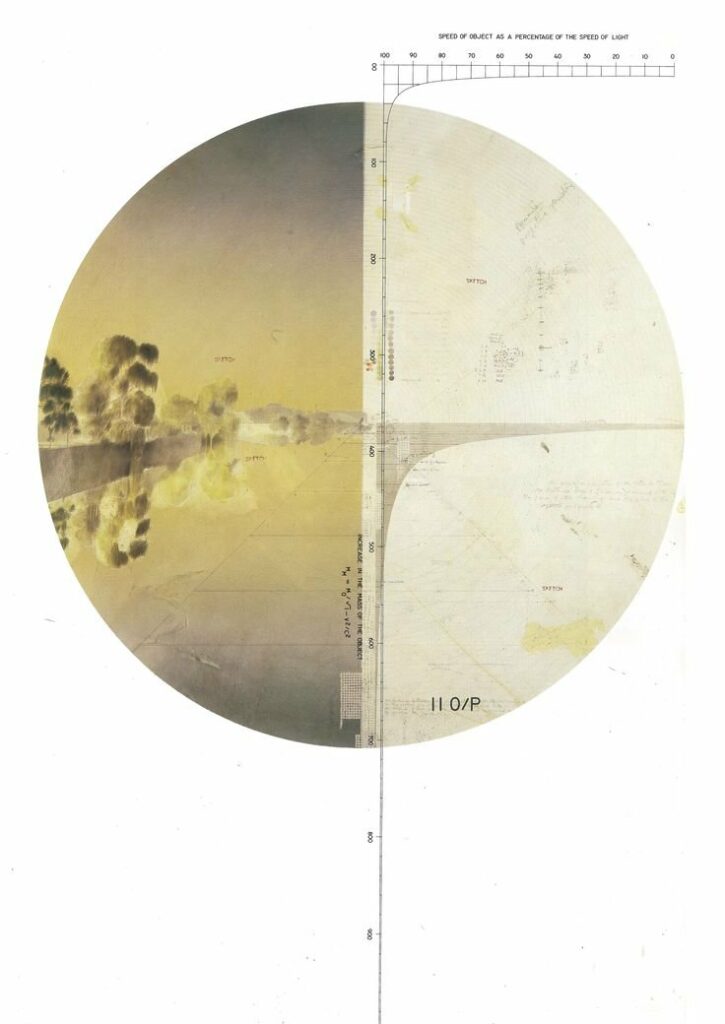
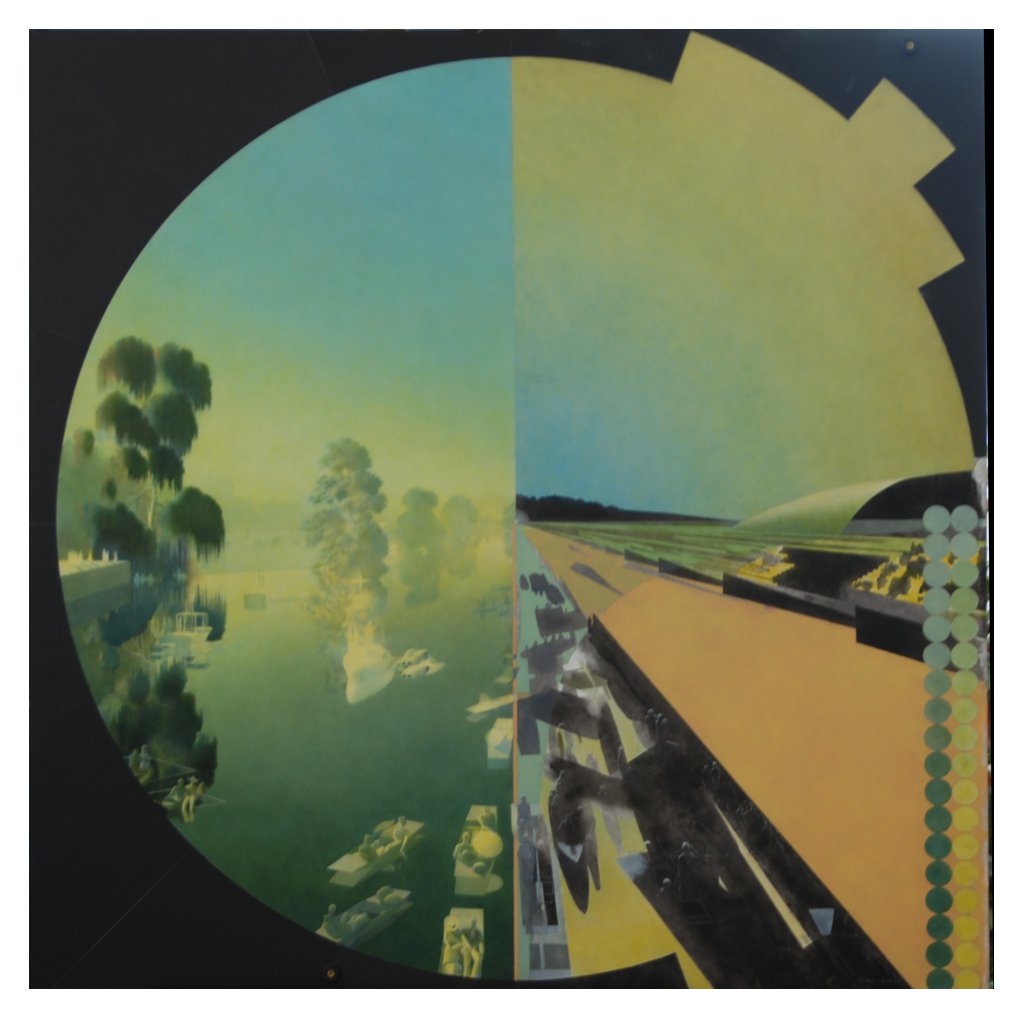
MW: The cone of vision. What’s going on here is … what we’re looking at is really what someone located at the apex of the pyramid can see. So, for example, if a person thus located looks down the Regatta course – the Henley Regatta in England (that’s the line of the river running down the middle) – if he or she is looking at a tree, they can’t see what’s behind it. So, if you’re depicting from another vantage point what that person at the apex can see, you have to show what’s behind the tree as a void. What I was getting into here was the fact that, if the air of the landscape was solidified, then the space of the tree projected back would become a void and would erupt through the edge of the cone.
MD: I think this is happening in the next image as well…
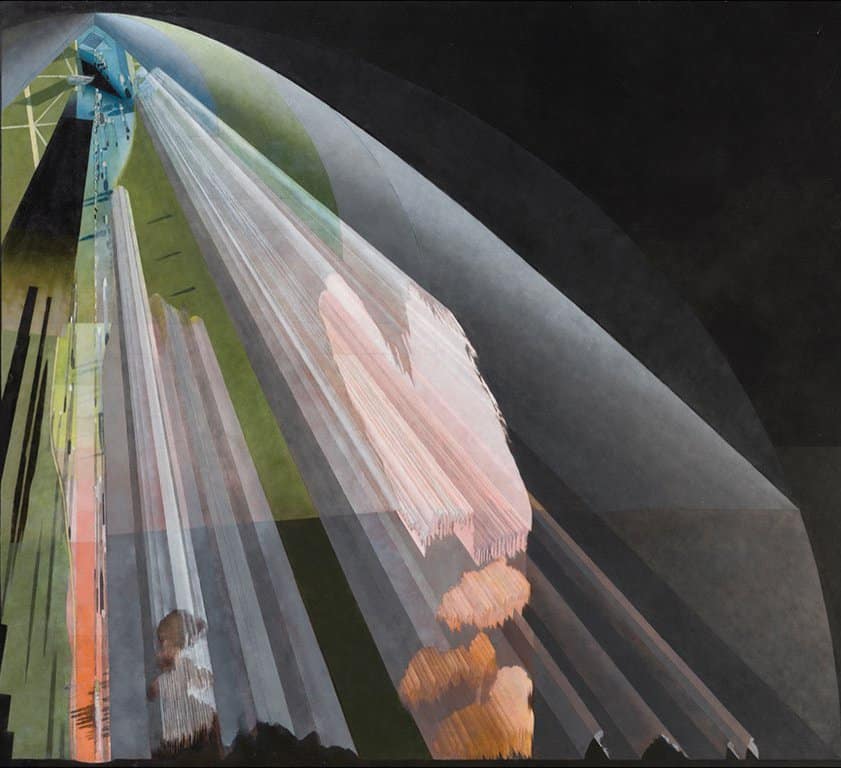
MW: That’s an oil painting just begun – you can’t see much in it really. The void created by the negative shadow of the tree is what that’s all about, where it’s erupting through the solidified volume of air. I think this project – a trip on the river Thames at Henley – should be seen in the light of a similar journey. It somehow to me evoked another journey which probably took place in 1862, when Lewis Carroll, accompanied by the Reverend Robinson Duckworth (what a beautiful name), took the Liddell sisters out for a glide on the river but at Oxford. And that’s when Alice Liddell probably first heard about the Cheshire Cat and about the White Rabbit and all those wonderful characters. The Cheshire Cat whose features had all disappeared except for the grin.
MD: Yes.
MW: That’s right – this is a similar voyage. Now there’s a wonderful poem on prefatory page of Alice in Wonderland about sailing down the river on a golden afternoon. This is a similar golden afternoon, a languorous glide down the river in which fantasies of vast structures in the air are created, such as you are beginning to see. But this is a very early stage …
